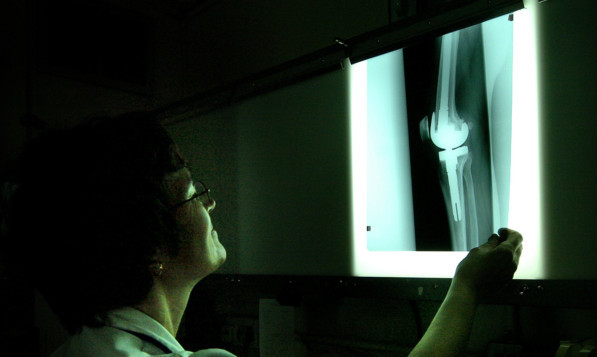Artificial bone created using stem cells and a new lightweight plastic could soon be used to heal broken limbs, according to scientists.
The use of bone stem cells combined with a degradable rigid material inserted into shattered bones can encourage real bone to re-grow, they found.
Researchers developed the material with a honeycomb scaffold structure to allow blood to flow through it, enabling stem cells from the patient’s bone marrow to attach to it and grow new bone.
Over time, the plastic slowly degrades as the implant is replaced by newly grown bone.
The development was made by teams based at the Universities of Edinburgh and Southampton, with the focus now moving towards human clinical evaluation after successful results in the lab and in animal testing.
The discovery is the result of a seven-year partnership between the two universities.
Scientists blended three types of plastics together after testing hundreds of combinations to develop a surface which was robust, lightweight and able to support bone stem cells.
Richard Oreffo, professor of musculoskeletal science at the University of Southampton, said: “Fractures and bone loss due to trauma or disease are a significant clinical and socio-economic problem.
“This collaboration between chemistry and medicine has identified unique candidate materials that support human bone stem cell growth and allow bone formation. Our collaborative strategy offers significant therapeutic implications.”
Professor Mark Bradley, of the University of Edinburgh’s school of chemistry, said: “We were able to make and look at hundreds of candidate materials and rapidly whittle these down to one which is strong enough to replace bone and is also a suitable surface upon which to grow new bone.
“We are confident that this material could soon be helping to improve the quality of life for patients with severe bone injuries, and will help maintain the health of an ageing population.”
The study, published in the journal Advanced Functional Materials, was funded by the Biotechnology and Biological Sciences Research Council.
